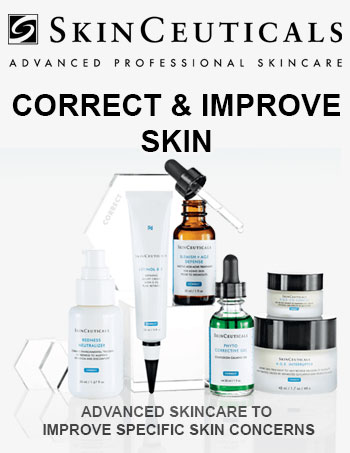What is hidradenitis suppurativa?
Hidradenitis suppurativa (HS) is a disease that usually begins as pimple-like bumps on the skin. The pimple-like bumps develop in places that everyday pimples do not appear. HS is most common on the underarms and groin. HS does not form on the face or back.
Some people say that their HS looks like one of these skin conditions:
- Pimples
- Deep-acne like cysts and blackheads
- Folliculitis (looks like swollen pimple with a hair in the center)
- Boils
Getting treatment for HS is important. Early diagnosis and treatment can prevent HS from worsening.
If HS worsens, the pimple-like bumps can grow deep into the skin and become painful. They can rupture, leaking bloodstained pus onto clothing. This fluid often has a foul odor.
As the deep bumps heal, scars can form. Some people develop tunnel-like tracts under their skin. As the skin continues to heal and scar, the scars thicken. When thick scars form in the underarm, moving the arm can be difficult. Thick scars in the groin area can make walking difficult.
If you have folliculitis that does not go away with treatment or breakouts that look like boils in your groin area, you may have HS.
Because HS can look lot like acne, folliculitis, or boils, it is best to see a dermatologist for a diagnosis. To a dermatologist’s trained eye, the differences between HS and other skin diseases are subtle but obvious. Proper treatment depends on an accurate diagnosis.
Hidradenitis suppurativa: Signs and symptoms
If you have this skin disease, you may notice breakouts on your skin that look like pimples or boils. Your skin may clear for a while, but you notice new breakouts develop in the same area.
Unlike everyday pimples, hidradenitis suppurativa (HS) forms in areas where skin touches skin. HS is most common in these areas:
- Underarms (one or both)
- Groin (genitals, around the anus, and surrounding area)
- Buttocks
- Upper thighs
- Women’s breasts (underneath and sometimes on the breasts)
Although rare, a few studies have found HS near an ear, around the bellybutton, or on the back of the neck.
Women tend to get breakouts on their genitals and upper thighs. Men are more likely to have HS on their genitals and around the anus.
Some people develop breakouts in the exact same spot each time. For others the breakouts appear in the same area, but never seem to be in the exact same spot.
Early signs and symptoms
When people first get hidradenitis suppurativa (HS), they often see:
- One (or several) breakouts that look like pimples or boils.
- Breakouts may stay on the skin; sometimes, they clear and reappear.
Later signs and symptoms
Without treatment, HS can worsen. If this disease progresses, the person may develop:
- Painful, deep breakouts that heal and reappear.
- Breakouts that rupture and leak a foul-smelling fluid.
- Scars that form as breakouts repeatedly heal and reappear.
- Scars that become thicker with time.
- Skin that begins to look spongy as tunnel-like tracts form deep in the skin.
- Serious infections.
- Skin cancer (rare).
Signs and symptoms can change
The signs and symptoms of HS can change quickly. One week, a person may have a foul-smelling fluid leaking from breakouts. The next week, the breakouts have cleared and scars are the only sign of HS.
Some people always have breakouts on their skin.
Skin cancer risk
HS develops on skin that tends to get little or no direct sunlight. Yet, a few people have developed squamous cell carcinoma, a common type of skin cancer, where they had HS breakouts and scarring for years. Most cases developed in men who had long-standing HS on their genitals or around their anus.
Treatment helps prevent long-standing HS.
Quality of life affected
Without treatment, HS can continue its cycle of breakouts and healing. As the breakouts clear, scars form. Continual healing and scarring can cause hollow passages called fistulas to develop inside the body. Fistulas can be painful and require surgery to repair.
People who have a foul-smelling liquid draining from the breakouts can feel embarrassed. They may feel too embarrassed to see a doctor. Dermatologists understand this. You should not feel embarrassed to see a dermatologist about this problem.
Hidradenitis suppurativa: Diagnosis, treatment, and outcome
How do dermatologists diagnose hidradenitis suppurativa?
To diagnose this skin disease, a dermatologist looks closely at the skin and asks some questions.
If your breakouts are leaking fluid, your dermatologist may swab a bit of the fluid onto a slide to find out if you have an infection. You also may need a blood test.
How do dermatologists treat hidradenitis suppurativa?
Dermatologists offer patients who have hidradenitis suppurativa (HS) many treatment options. No one treatment works for everyone who has HS. Sometimes, a patient needs to try a few different treatments to find one that works.
No FDA-approved treatment for HS
The treatments listed below are classified as “off label.” The term “off label” means that the U.S. Food and Drug Administration (FDA) has not approved the medicine to treat the disease. There are currently no FDA-approved treatments for HS.
Most of the treatments listed below are ones that dermatologists use frequently in their practices. Because dermatologists use most of these treatments very often, they have in-depth knowledge of these treatments.
They use these treatments to help their patients with HS:
- Clear or reduce breakouts.
- Get rid of scars and tunnels beneath the skin.
- Prevent new breakouts.
Medicines used to treat HS: If you have HS, your dermatologist may include one or more of the following in your treatment plan:
- Antibiotics: This is often part of the treatment plan. These drugs can fight infection, prevent HS from worsening, and stop new breakouts.
- Acne washes and medicines: Acne treatments that you can buy without a prescription may be helpful. Using only these products will not clear HS.
- Bleach bath: If you have a skin infection, your dermatologist may recommend taking a 5- or 10-minute bleach bath. To make a bleach bath, you add ½ cup of non-scented, household bleach to running water. Be sure to fill the tub half way.
- Biologics (severe HS only): These medicines work on the immune system. Some biologics require self-injections; others require an infusion at a hospital or clinic. Some patients see long-term clearing of their HS. Due to possible serious side effects, you should discuss the risks and benefits with your dermatologist.
- Corticosteroid injection into a breakout: Your dermatologist may inject this into a painful cyst to reduce pain and swelling.
- Corticosteroid pills: This medicine reduces inflammation, which can help clear HS and prevent new breakouts.
- Diabetes drug: Metformin has been approved to treat adult-onset diabetes. It may also help people who have HS and a condition called metabolic syndrome.
- Hormone therapy: Some women who have HS get relief by taking birth-control pills, a medicine called spironolactone, or another medicine that regulates hormones. These medicines can decrease pain and the amount of fluid draining from the breakouts.
- Methotrexate (severe HS only): This medicine is used to treat cancer and certain other medical conditions, such as severe psoriasis. It works on the immune system and may help control HS in some patients.
- Oral retinoid: A few patients with HS are helped.
- Radiation therapy: This treatment exposes the body to radiation, so it is used less often today than in the past. Some patients have seen their HS clear. Be sure to talk with your dermatologist about the short- and long-term risks to your body.
- Wound dressings: If the HS causes tunnels beneath your skin, you will need to treat these as you would wounds.
Surgical treatment for HS: When HS grows deep into the skin, medicine alone may not be effective. Your dermatologist may recommend a surgical procedure. The following can be performed in a dermatologist’s office or clinic:
- Laser surgery: This treatment is showing promise. Some patients clear after several treatments. Lasers are proving effective at clearing new and deep HS breakouts. This treatment may be helpful because it destroys the hair follicles.
- Deroofing: This surgery may be an option for patients who have painful HS that repeatedly returns. The surgeon turns deep, painful HS into scars.
- Drain or incise: During the surgery, the dermatologist drains 1 or 2 lesions or cuts them out. This can bring short-term relief, but the HS can return.
- Excision: This involves surgically cutting out the HS and some normal-looking skin. Because the wound is deep, the area needs to be covered with a skin graft (skin removed from another part of your body) or skin flap (skin from nearby is pulled over to cover the wound). HS does not return to the treated area, but it can develop nearby.
- Outcome: Lifestyle changes can be effective
Many people have HS for life. Studies continue to show that making certain lifestyle changes can help tremendously. Weight loss has proven so effective that some patients say maintaining a healthy weight prevents HS breakouts.
Hidradenitis suppurativa: Tips for managing
If you have hidradenitis suppurativa (HS), making a few changes to your lifestyle may be the most helpful treatment of all. Dermatologists have found that patients who make some lifestyle changes tend to have fewer flare-ups. They also tend to have less severe HS.
Dermatologists offer the following tips to their patients who have HS:
Lose weight to lessen HS — or even clear your skin. If you are overweight, losing weight may be the most effective way to control HS. It may even be more effective than treatment. Dermatologists have found that when patients who have HS lose weight, they have fewer flare-ups. Losing just 10% of your body weight can make a difference.
- Losing weight has additional benefits for people who have HS. Findings from one medical study showed that having HS increases the risk for developing other health problems, including heart disease and diabetes. HS also increases the risk of having a stroke. Losing weight and eating a well-balanced diet on most days can reduce these risks.
- Quit smoking to reduce HS flare-ups. Quitting smoking can help you live a longer, healthier life. It also can reduce HS flare-ups and decrease the severity of HS.
- Stop shaving where you have breakouts. Shaving can irritate the skin. If you want to remove the hair, ask your dermatologist what you can safely use to remove the hair.
- Wear loose-fitting clothes to reduce friction. Tight waistbands and form-fitting clothes tend to rub against your skin, causing HS to flare. Wearing loose-fitting clothes, including underwear, can help.
- Keep your skin cool. Overheating and sweating can cause HS to flare. If you need a product that can help reduce sweating, such as an antiperspirant, ask your dermatologist for a recommendation. Some antiperspirants are too harsh for skin affected by HS.
Immediate pain relief at home: Deep cyst or nodule
If you have a painful deep lump from HS, doing one of the following can bring quick relief:
- Make tea, using a teabag. After the teabag seeps in the hot water for a minute, remove the hot teabag and place it on the painful cyst or nodule. Keep the teabag on the HS for 10 minutes.
- Make a hot compress. Do this by running a clean washcloth under hot water. Place the hot compress on the HS for 10 minutes.
The warmth can bring immediately pain relief, but it won’t get rid of the cyst or nodule.
Dermatologists provide specific tips for each patient
These tips can help most patients who have HS. Because HS can affect the skin in different ways, other tips may help you. Your dermatologist can offer self-care tips that can help you manage your HS.




